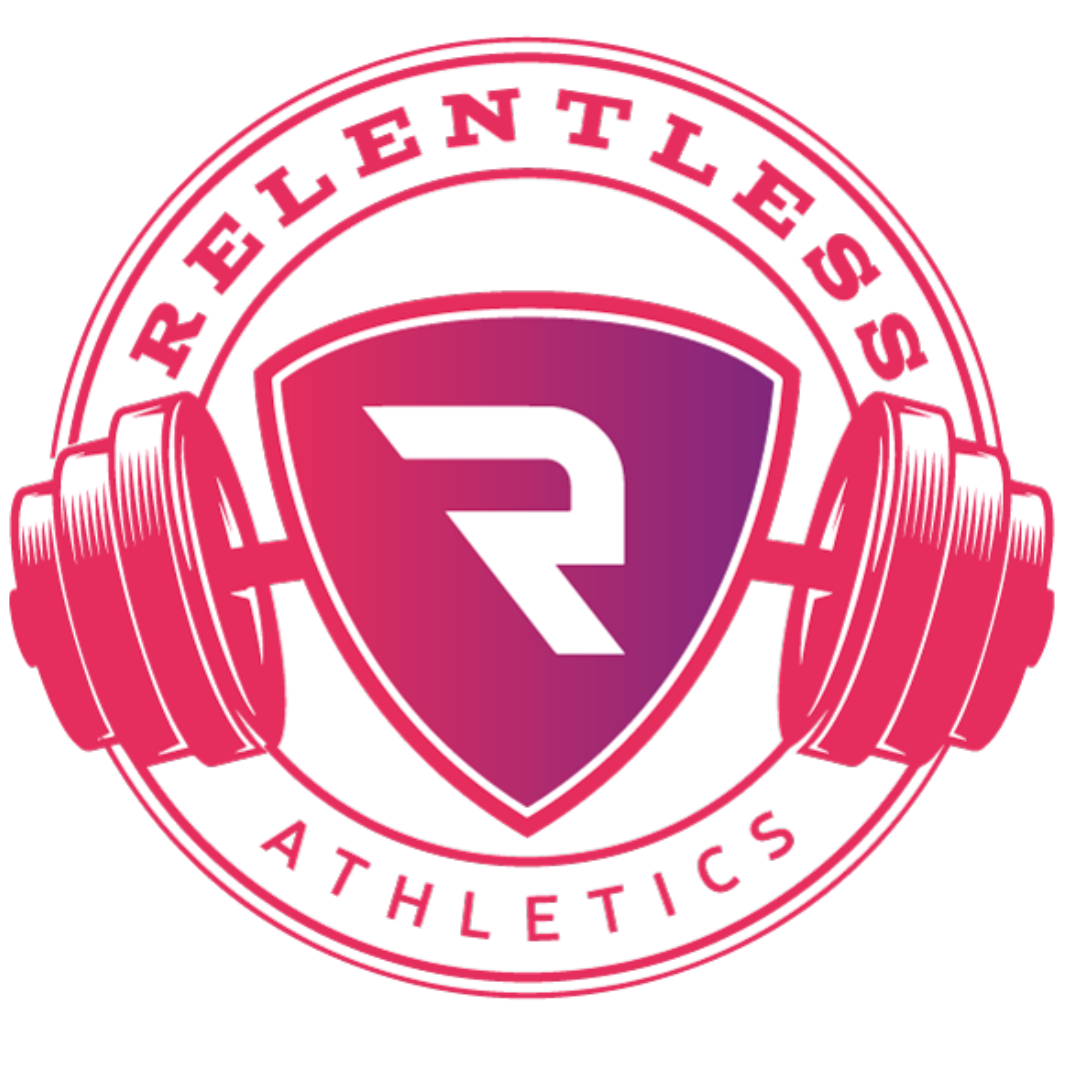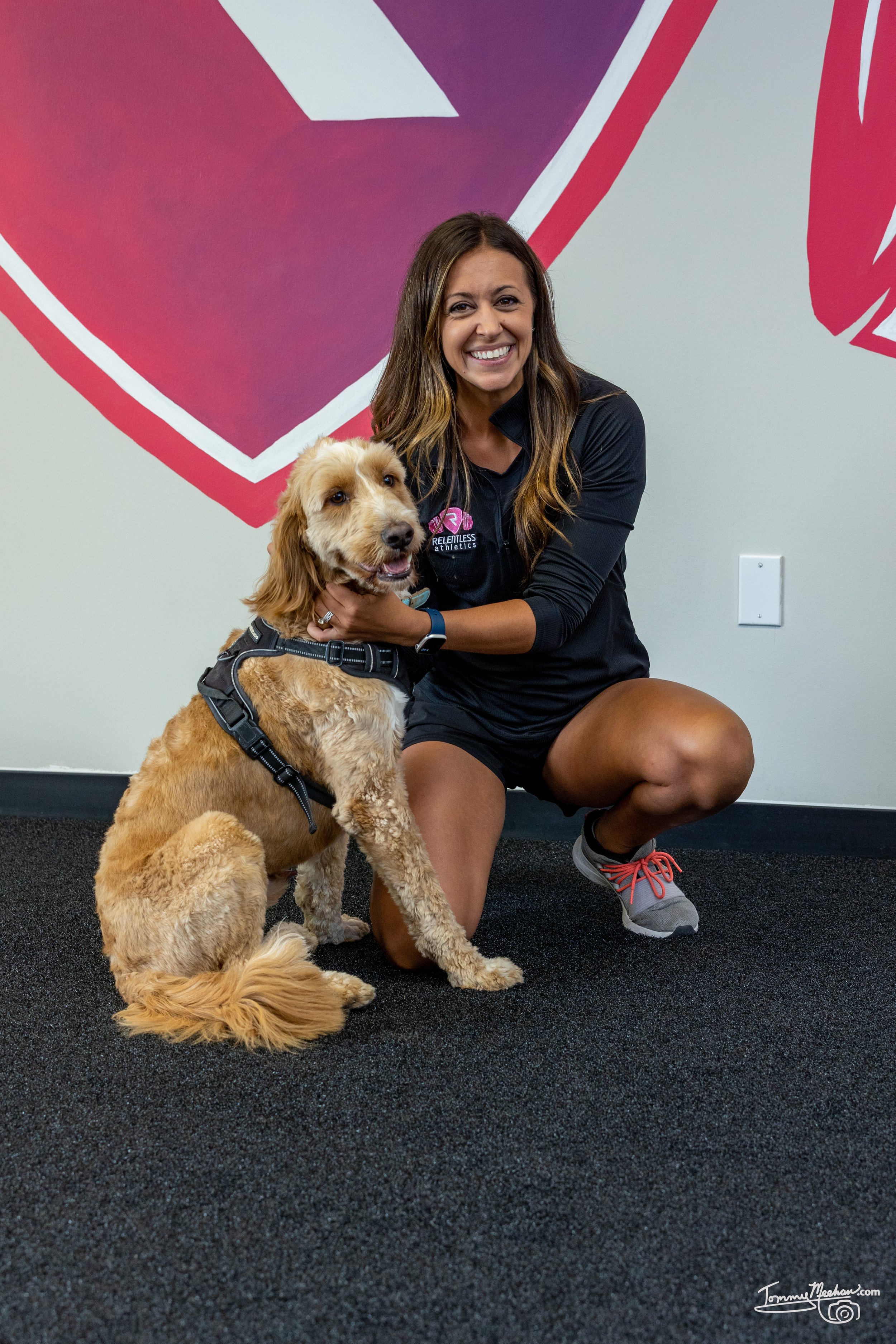What Causes Soreness? How to manage training during the sports season to avoid being sore.
By Emily Neff (Pappas), Ph.D. student
Soreness is a common companion for athletes, Resulting from pushing the body beyond its accustomed limits.
And when female athletes feel sore, they often feel their sports performance will suffer!
But what actually causes soreness?
And how can the female athlete manAge weight Training, practice, and mitigate soreness during her sports season?
What Is soreness?
Decades ago, coaches believed soreness was caused by a build-up of lactic acid in the muscles.
To help alleviate discomfort, they would recommend jogging it out or putting our legs up against a wall to “flush” it out of your muscles.
Thanks to science, we know lactic acid buildup is actually not a thing and absolutely NOT the cause of soreness!
Instead, soreness results from micro-tears in your muscles that occur when exposing the body to something it is not accustomed to doing!
Although micro-tears sound bad..they are a good thing!
It is how your body signals its repair system to help the body REBUILD and become STRONGER and accustomed to this new challenge!
This repair is known as adaptation and is essential to improving the female athlete’s capacity to do hard things (like run fast, lift heavy) and in large amounts (like train 15-20hrs per week or run over 3miles) without being sore.
What Causes Soreness?
These micro-tears occur when the body is exposed to two main conditions:
SOMETHING NEW (novelty)
HIGH VOLUME
SOMETHING NEW
One significant contributor to soreness is the introduction of novelty – anything new introduced to your training routine can trigger small micro-tears and resulting muscle soreness.
Whether it's a new exercise, increased intensity, or a change in training patterns, the muscles adapt, resulting in soreness.
Another factor is the absence of consistency.
Deviating significantly from your regular routine, such as abruptly increasing the distance you run or changing the intensity or frequency of your workouts, can leave muscles in a state of discomfort.
For many female athletes, this is the culprit of soreness DURING the season.
Have a game tomorrow and don’t want to be sore? Most females will skip their lifts the day before.
But this change to her routine means when she returns to lifting, this routine will be NEW again—leading to soreness!
Instead of skipping, she is better off shortening the session, keeping volume LOW and intensity HIGH while doing movements her body is already used to doing!
In doing so, she will not only AVOID SORENESS but also maintain her muscles to act as cushions for her joints and reduce injuries while also PRIMING her muscles for HIGH outputs of speed and power!
HIGH VOLUME
Another significant contributor to soreness is the introduction of HIGH VOLUME – high volume movements like long duration runs or lifts over 8 reps will lead to higher eccentric loading.
Greater eccentric loading leads to the creation of more micro-tears and, eventually, soreness!
Female athletes are encouraged to balance volume and intensity in their training to mitigate soreness during the season.
While consistency is vital, it doesn't mean avoiding challenging workouts altogether.
Instead, focus on keeping the volume low and the intensity high.
Higher intensity movements (80%+) help her muscles know its time to produce HIGH FORCE OUTPUTS (strength).
Smaller rep ranges (1-4 reps) performed at faster speeds help her muscles know its time to produce HIGH POWER & SPEED OUTPUTS.
These are the MAIN QUALITIES you want her body to express on the field or court!
For instance, incorporating 3-4 sets of 1-4 repetitions at 80% or above of your maximum effort can provide the necessary stimulus for strength gains without overwhelming the muscles with excessive volume.
SORENESS & lifting during the SPORTS season
Contrary to common misconceptions, incorporating lifting into your routine during the season can be a game-changer in preventing soreness.
By strategically integrating strength training, you not only enhance your overall athletic performance but also condition your muscles to handle the demands of your sport.
Fear of soreness should not deter female athletes from lifting; rather, it should underscore the importance of proper programming.
Lifting during the season helps maintain muscle strength and stability, reducing the risk of injury.
The strategic approach of keeping volume low and intensity high ensures that your body adapts gradually, minimizing the likelihood of excessive soreness.
Because when the female athlete stops lifting, she is at a HIGHER risk of injury, and her performance improvements will start to GO AWAY! In fact, speed and power notably decrease within ten days away from the weight room.
Embrace lifting as a valuable tool to enhance your performance and resilience, not just in the off-season, but throughout the competitive period.
CLOSING THOUGHTS
Soreness in female athletes is often a result of novel stimuli and inconsistent training patterns.
The key to preventing soreness during the season lies in striking a balance between volume and intensity, with strategic strength training playing a pivotal role.
Don't shy away from lifting out of fear of soreness; approach it strategically to unlock your full athletic potential and keep your body in prime condition for peak performance.
ABOUT THE AUTHOR
In 2015 Emily opened Relentless Athletics to build a community for female athletes while educating their parents and coaches on the necessity of strength training and sports nutrition to optimize sports performance and reduce injury risks in the female athlete population.
Emily holds a M.S. in Exercise Physiology from Temple University and a B.S. in Biological Sciences from Drexel University. She is currently pursuing her Ph.D. at Concordia University St. Paul with a research focus on female athletes & the relationship between strength training frequency, ACL injury rates, and menstrual cycle irregularities (RED-s). Through this education, Emily values her ability to coach athletes and develop strength coaches with a perspective that is grounded in biochemistry and human physiology.
When she isn’t on the coaching floor or working in her office, she is at home with her husband Jarrod and their daughter Maya Rose, and, of course, their dog Milo (who has become the mascot of Relentless)!!

















